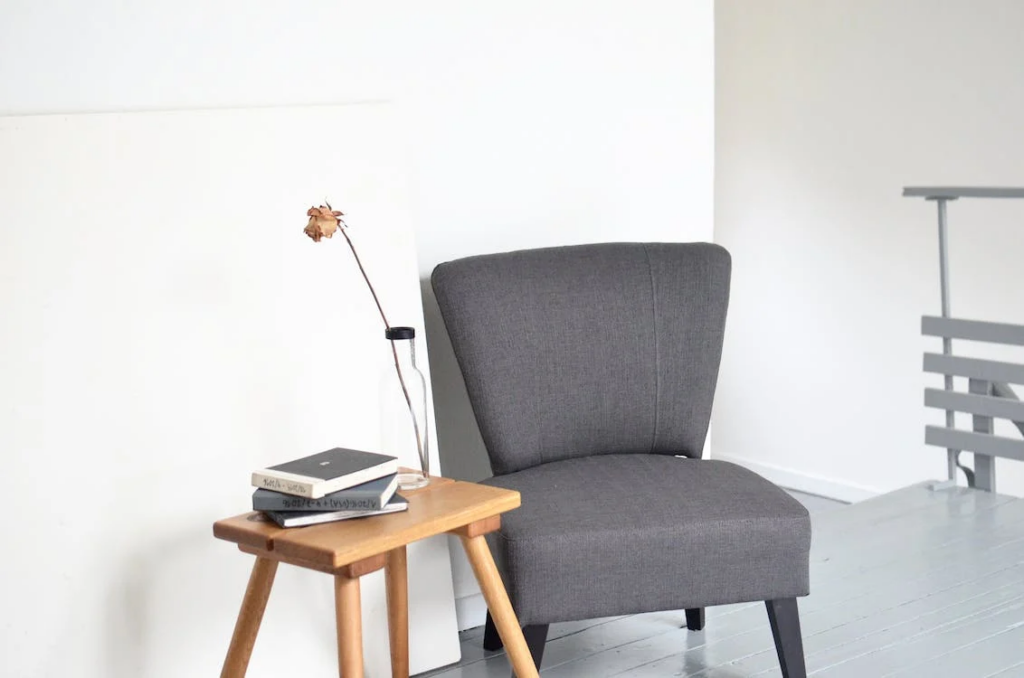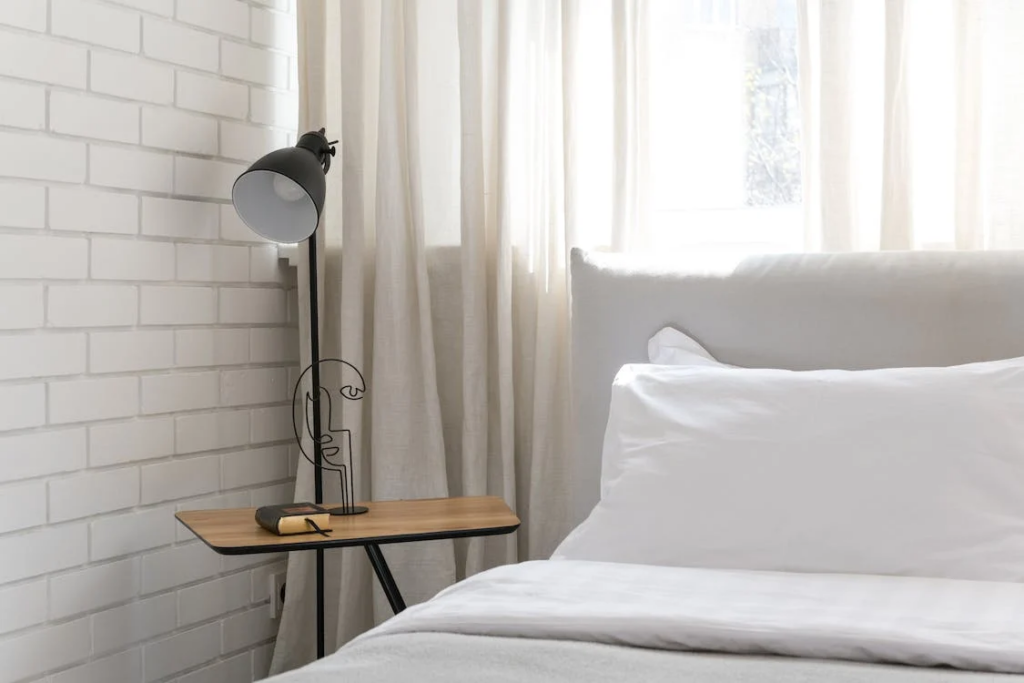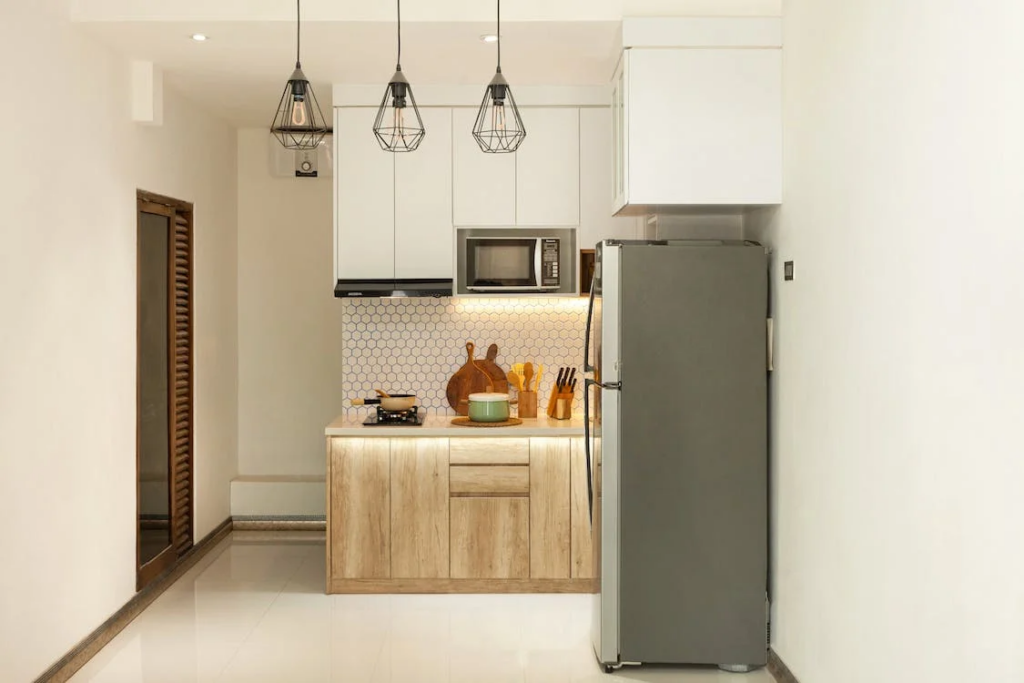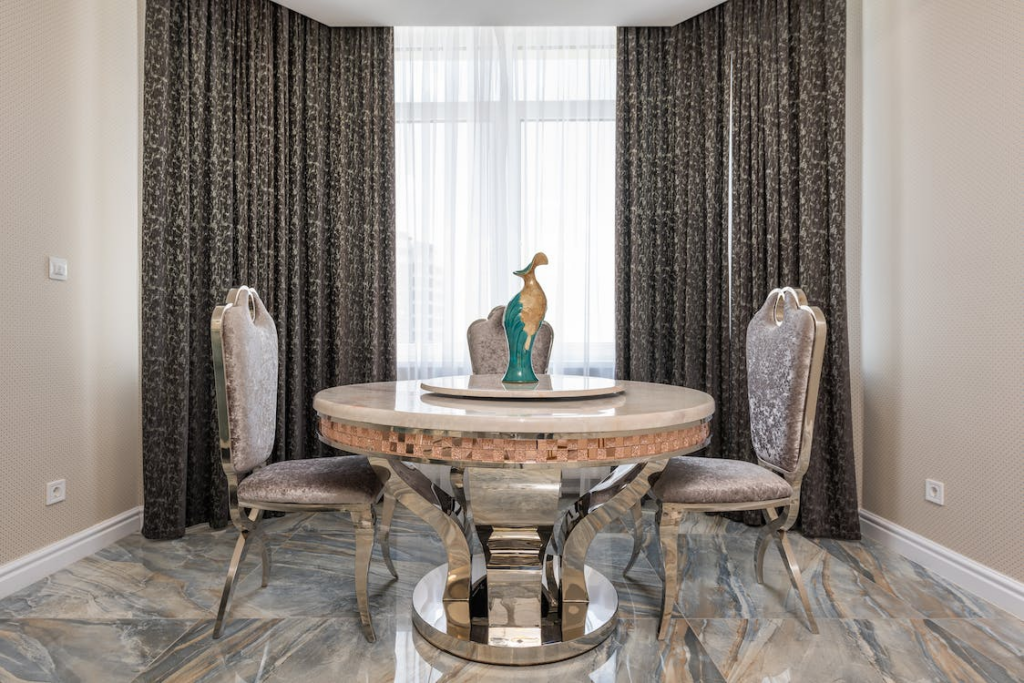Have you ever felt overwhelmed by the amount of stuff in your home? Do you find yourself constantly tidying up and decluttering, only to have the clutter return shortly after? If so, you’re not alone. Many people are embracing minimalism as a way to simplify their lives and create a more peaceful and organized living space.
Making the Transition to Minimalism

In this article “Making the Transition to Minimalism : Tips and Strategies for First-time Homeowners”, we will explore the concept of minimalism and why it has become so popular in recent years. We’ll delve into the benefits of adopting a minimalist lifestyle and how it can positively impact your well-being and your relationship with material possessions. We’ll also provide you with some practical tips and strategies to help you transition to a more minimalist way of living.
So, if you’re ready to let go of the excess and create a home that truly reflects who you are and what you value, read on. Let’s dive into the world of minimalism and discover how it can transform your life.
What is Minimalism and Why is it Popular?

In today’s fast-paced and consumer-driven world, many individuals are feeling overwhelmed and suffocated by the constant onslaught of material possessions and commitments. As a result, an increasing number of people are turning to minimalism as a way to simplify their lives, declutter their spaces, and find more meaning and fulfillment in the things that truly matter.
Minimalism is a lifestyle choice characterized by simplicity, decluttering, and intentional living. It involves stripping away excess and focusing on what is essential, both in terms of physical belongings and mental clutter. It’s about consciously choosing to live with less, freeing oneself from the constant pursuit of material possessions, and instead opting for a life of purpose and intention.
So, why is minimalism becoming so popular? Here are a few reasons:
- Reducing Stress and Overwhelm: Living a minimalist lifestyle can help alleviate stress and overwhelm by simplifying your surroundings and minimizing distractions. When you have fewer physical possessions and commitments, you have more time and mental energy to focus on the things that truly matter to you.
- Cultivating Mindfulness and Gratitude: By consciously choosing to have fewer belongings, minimalism encourages you to be more mindful of what you bring into your life and appreciate the things you already have. It fosters a sense of gratitude and helps shift your focus from acquiring more things to cherishing the present moment.
- Saving Money and Resources: Minimalism promotes mindful consumption and encourages you to question your purchasing habits. By buying only what you truly need and eliminating unnecessary expenses, you can save money and reduce your ecological footprint. Minimalism promotes sustainability and conscious living.
- Creating Space for What Matters: Minimalism is not just about getting rid of physical clutter; it’s also about creating space for what matters most to you. By simplifying your life, you can focus on your passions, relationships, personal growth, and overall well-being. It allows you to prioritize experiences and relationships over material possessions.
While minimalism may not be for everyone, the minimalist trend is expected to continue in popularity in 2023 and beyond. As more people seek simplicity, balance, and meaning in their lives, the principles of minimalism provide a practical and meaningful way to achieve that. So, whether you’re looking to declutter your home, simplify your schedule, or find more fulfillment in your everyday life, minimalism offers a refreshing and transformative approach.
Remember, it’s not about adhering to strict rules or completely emptying your life of possessions. It’s about finding what works best for you and embracing the essence of minimalism in a way that aligns with your values and goals. Embrace the freedom and intentionality that minimalism can bring and embark on a journey towards a simpler, more meaningful life.
Benefits of Minimalism

In today’s fast-paced and consumer-driven world, many people are finding solace in embracing a minimalist lifestyle. Minimalism is not just about decluttering your physical space; it’s a mindset that can have profound effects on your overall well-being. By simplifying your life and removing unnecessary distractions, you can experience a sense of freedom and clarity that translates into various aspects of your life. In this article, we will delve into two significant benefits of minimalism: psychological well-being and control over consumption.
Psychological Well-being
Living a minimalist lifestyle can have a positive impact on your mental health and well-being. Here are some ways minimalism contributes to psychological well-being:
- Reduced Stress: Clutter and excess possessions can create a constant state of mental chaos and overwhelm. By simplifying your surroundings and focusing on what truly matters, you can alleviate stress and create a more peaceful living environment.
- Increased Focus: A minimalist lifestyle helps you eliminate distractions and focus on your priorities. By getting rid of unnecessary possessions, commitments, and obligations, you free up mental space to concentrate on what’s truly important in your life.
- Improved Mental Clarity: When you declutter your physical space, you also declutter your mind. Minimalism promotes clear thinking and decision-making by reducing the mental burden of excess stuff and commitments.
- Enhanced Creativity: A clutter-free environment can stimulate creativity and innovation. With fewer distractions, your mind is free to wander and explore new ideas and possibilities.
Control over Consumption
Minimalism empowers individuals to take control of their consumption habits and live more intentionally. Here’s how minimalism allows you to have control over your consumption:
- Reduced Materialism: Minimalism encourages you to prioritize experiences and relationships over material possessions. By reducing your attachment to material things, you can break free from the cycle of constant acquisition and find fulfillment in the things that truly matter.
- Financial Freedom: With a minimalist lifestyle, you spend less money on unnecessary items, which can lead to financial freedom. By resisting the urge to constantly buy more, you can save money, pay off debt, and have more financial security.
- Environmental Benefits: Minimalism promotes sustainability and reduces environmental impact. By consuming less, you contribute to the preservation of natural resources and help mitigate the negative effects of overconsumption on the planet.
- Increased Value of Possessions: When you have fewer possessions, you tend to appreciate and value the items you do have more. Instead of constantly chasing the next new thing, minimalism encourages you to cherish what you already own and take better care of your belongings.
Embracing minimalism not only brings about a sense of calm and contentment but also enables you to live a more intentional and fulfilling life. By prioritizing what truly matters and regaining control over your consumption habits, you can experience a greater sense of well-being and satisfaction. So, why not start decluttering your life and embracing minimalism today?
Learn more about the psychological well-being and control over consumption benefits of minimalism in our article here.
Also Read: Achieving Balance : Incorporating Minimalism in a Personalized Way in 2024.
Statistics on Minimalism

Minimalism has gained significant popularity in recent years, inspiring people to declutter their lives and embrace a simpler, more intentional lifestyle. But just how many people actually identify as minimalists? And what about those who have yet to jump on the minimalist bandwagon?
Let’s take a closer look at some statistics surrounding minimalism:
Minimalist Population
Contrary to what some might think, minimalism is not a lifestyle embraced by the masses. In fact, according to recent studies, only 10% of people consider themselves minimalists. This means that the majority of individuals are still holding on to their excess belongings, living in cluttered spaces, and perhaps feeling overwhelmed by the chaos in their lives.
Desire to Become Minimalist
While only a small percentage of the population currently identify as minimalists, it’s worth exploring whether there is a desire among the majority to adopt this lifestyle. Surprisingly, studies show that a significant 65% of people have no desire to become minimalists.
This statistic sheds light on the fact that minimalism is not a one-size-fits-all approach. Many individuals find comfort and fulfillment in the things they surround themselves with, while others may feel overwhelmed by the idea of letting go of their possessions.
But what drives this desire to become minimalist for those who do embrace it? Some possible factors motivating people to pursue minimalism include:
- Simplicity and Clarity: Minimalism offers a sense of clarity and simplification in a world that can often feel overwhelming and cluttered. By paring down possessions and focusing on what truly matters, minimalists aim to find peace and contentment in living with less.
- Financial Freedom: Embracing a minimalist lifestyle can also have financial benefits. By cutting back on unnecessary purchases and focusing on mindful spending, minimalists can save money, reduce debt, and achieve financial independence.
- Environmental Impact: Many minimalists are also drawn to the environmental benefits of living with less. By consuming fewer resources and reducing waste, minimalism supports sustainability and helps protect the planet.
- Mindfulness and Well-being: Minimalism is about more than just physical decluttering; it’s also about decluttering the mind. By simplifying their lives, minimalists can experience increased mental clarity, reduced stress, and improved overall well-being.
In conclusion, while minimalism may not be the prevailing lifestyle choice for the majority, there is still a small but significant population that embraces this intentional way of living. The desire to become minimalist stems from various motivations, including simplicity, financial freedom, environmental consciousness, and improved well-being. As we delve further into the world of minimalism, it becomes clear that embracing this mindset can have profound benefits for individuals and society as a whole.
Tips for Transitioning to Minimalism

Are you feeling overwhelmed by the clutter in your home? Do you find yourself constantly buying things you don’t need? It might be time to embrace minimalism. Transitioning to a minimalist lifestyle can bring numerous benefits, including reduced stress, increased focus, and a greater sense of clarity. But where do you start? Here are some practical tips to help you on your minimalist journey:
Declutter One Room at a Time
Start by decluttering one room at a time to avoid feeling overwhelmed. Pick a room that you use frequently or one that you feel is contributing the most to the clutter in your home. Set aside dedicated time to go through every item in that room and ask yourself a few essential questions:
- Do I use this item regularly?
- Does this item bring me joy or have sentimental value?
- Can I easily replace this item if needed?
By focusing on one room at a time, you can break down the decluttering process into manageable steps. You’ll be amazed at how much lighter and more peaceful your space feels once you’ve cleared out the excess.
Set Clear Boundaries
Set clear boundaries for what you want to keep and what you can let go of. Minimalism is all about prioritizing what truly matters to you and letting go of the rest. When decluttering, be honest with yourself about what items serve a purpose in your life and bring you joy. Consider the following guidelines:
- Remove duplicates: Do you really need three sets of measuring cups or five pairs of jeans?
- Let go of items with negative associations: Holding onto things that remind you of negative experiences can hold you back from embracing a more positive future.
- Distinguish between wants and needs: Challenge yourself to identify your true needs versus things you simply want but can live without.
Having clear boundaries helps you make informed decisions about what to keep and what to part ways with, making it easier to maintain a clutter-free living space.
Be Intentional about Purchases
Be intentional about your purchases, considering if they align with your minimalist goals. Minimalism isn’t just about decluttering; it’s also about changing your mindset when it comes to acquiring new things. Before making a purchase, pause and ask yourself:
- Do I genuinely need this item?
- Will owning this item add value to my life?
- Can I find an alternative or borrow this item if I only need it temporarily?
Taking a thoughtful approach to your purchases helps you avoid adding unnecessary items to your home and promotes a more sustainable lifestyle. Remember, fewer things can lead to more enjoyment and fulfillment in the long run.
So, are you ready to embark on your minimalist journey? Start by decluttering one room at a time, setting clear boundaries for what you really need, and being intentional about the things you bring into your life. With these tips in mind, you’ll be well on your way to a simpler, more fulfilling lifestyle.
Also Read: Incorporating Minimalism in Every Room of Your Home in 2024.
Conclusion
In conclusion, transitioning to a minimalist lifestyle can bring numerous benefits to first-time homeowners. By embracing minimalism, individuals can experience psychological well-being and gain control over their consumption habits. The popularity of minimalism is evident in the growing number of people who are gravitating towards this lifestyle. With the right tips and strategies, such as decluttering one room at a time, setting clear boundaries, and being intentional about purchases, homeowners can successfully make the transition to minimalism.
If you’re a new homeowner looking to incorporate minimalism into your living space, Minimalist Home Guru is here to guide you. With our expertise in decluttering, selecting clean-lined furniture, and creating a calming and clutter-free environment, we can help you achieve the minimalist aesthetic you desire. Visit our website at Minimalist Home Guru to learn more about how we can assist you on your minimalist journey.
For getting access to more information, read 10 Stunning Architectural Designs That Will Inspire Your Home in 2024.
Frequently Asked Questions
- What is minimalism in the context of home ownership?
Minimalism in home ownership refers to the intentional reduction of unnecessary belongings, clutter, and excessive decor to create a simpler and more organized living space. - Why should first-time homeowners consider transitioning to minimalism?
Transitioning to minimalism as a first-time homeowner can help create a stress-free and clutter-free living environment, save money on buying unnecessary items, and promote a more sustainable lifestyle. - What are some practical tips for adopting a minimalist lifestyle in a new home?
Some practical tips for adopting a minimalist lifestyle in a new home are: donate or sell items you don’t use or need, declutter one room at a time, focus on quality over quantity when buying new items, and organize belongings in designated places. - How can minimalism contribute to a more sustainable lifestyle?
Minimalism promotes sustainability by reducing waste, excessive consumption, and the need for constant materialistic purchases. By embracing minimalism, homeowners can also opt for eco-friendly and durable products. - Can you have a minimalist home that still feels warm and inviting?
Yes, a minimalist home can be warm and inviting. By carefully selecting a few meaningful decor pieces, incorporating natural elements, and using warm and neutral color palettes, a minimalist home can create a cozy and welcoming atmosphere.

